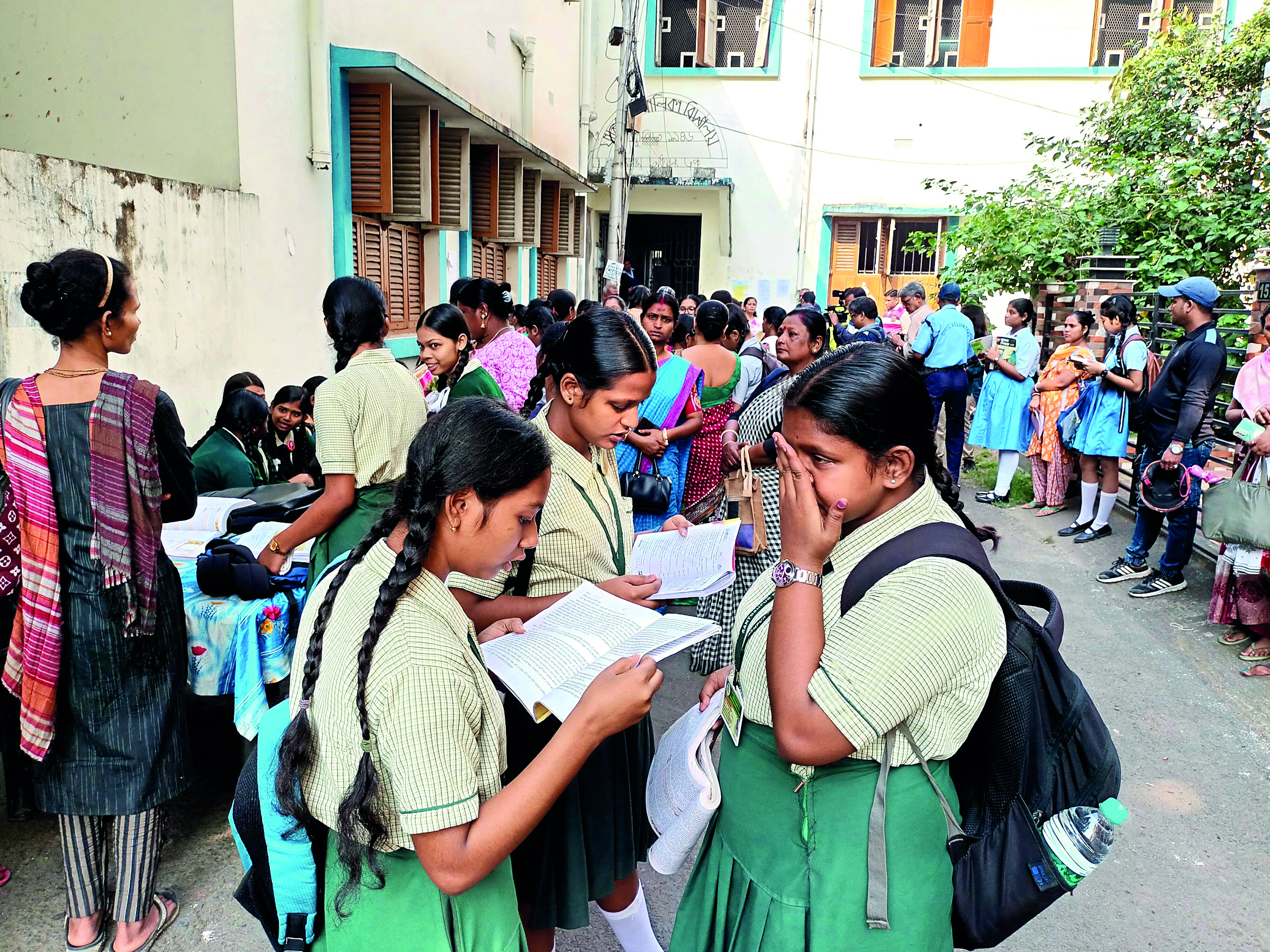
Kolkata, Feb. 14 -- For nearly 15 years, female candidates have outnumbered male students in the Madhyamik examination, and this year is no exception. Education department officials and experts attribute this shift to various state government initiatives aimed at promoting girls' education and preventing child marriages. Separately, concerns remain over the declining number of boys appearing for the exams.
The 2025 Madhyamik, which commenced on February 10, saw a total enrolment of 9,84,910 students, with girls outnumbering boys by over 1.27 lakh. Of the total candidates, nearly 5.55 lakh are female, while 4.28 lakh are male. The exams will conclude on February 22.
This trend, while not new, reflects a steady shift in educational patterns, with female students consistently outnumbering their male counterparts since 2011. According to state Education Department statistics, girls outnumbered boys in the 2011 Madhyamik exams by around 25,000. By 2016, the number of female candidates was nearly 9 per cent higher than that of male candidates. In 2018, the gap stood at 12 per cent, and even during the Covid-affected years of 2021 and 2022, female examinees exceeded male candidates by about 11 per cent.
State Education minister Bratya Basu credit this shift to various welfare schemes that have encouraged girls to remain in school. Programmes such as Kanyashree (financial aid for girls' education), Sabooj Sathi (free bicycles for students), and a strengthened public school network have significantly contributed to increased participation of girls in schools. The official also explained that higher female enrollment across various class levels is reflected in Madhyamik numbers.
In addition, initiatives like Lakshmir Bhandar, aimed at financially empowering women, have also strengthened families' willingness to support their daughters' education.
Furthermore, the state's favourable male-to-female population ratio, which is higher than the national average, has bolstered female participation in education.
However, some experts believe that the widening gap can also be attributed to a higher dropout rate among boys, especially in rural areas, where many leave school early to seek employment.
According to them, while government schemes have helped more girls continue their education, a significant factor in the declining number of male students is their tendency to drop out and migrate to other states for work.
Despite varying opinions on the reasons behind this trend, many believe that the growing number of female students in Madhyamik is no longer an anomaly but a well-established norm.
Published by HT Digital Content Services with permission from Millennium Post.
